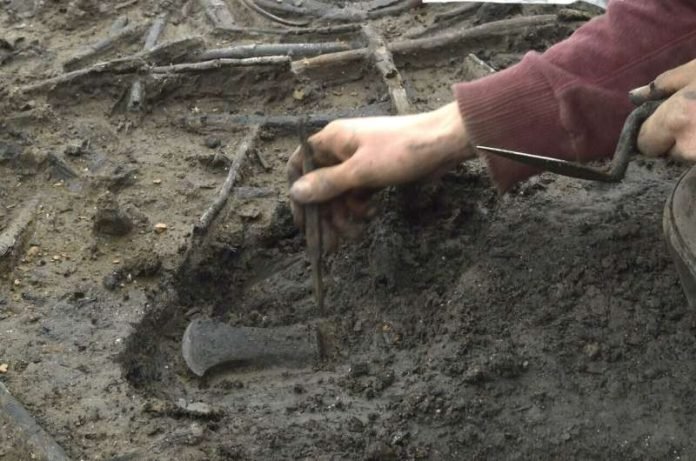
Nearly 3,000 years ago, in what is now England, there was a village unlike any other. This was Must Farm, a small community built on stilts above a slow-moving river.
The people who lived there had their homes elevated about two meters off the ground, connected by walkways, and protected by a sharp, wooden fence.
But this innovative settlement met a tragic end less than a year after its construction, destroyed by a devastating fire.
What makes Must Farm extraordinary, often called “Britain’s Pompeii,” is how this disaster preserved a snapshot of prehistoric life, giving us a clear view into the past.
Excavations led by the University of Cambridge have revealed incredible details about this late Bronze Age settlement, dated around 850BC. Archaeologists uncovered the remains of four large roundhouses and an entranceway, all constructed on stilts.
The preservation of thousands of artifacts provides us with insights into the daily lives of the Fenland inhabitants, showcasing their surprisingly comfortable lifestyles.
The layout of their homes, with separate areas for cooking, sleeping, and working, resembles modern house designs. They enjoyed meals that included honey-glazed venison and wore clothes made from fine flax linen.
The discovery of a recycling bin indicates their practices of reusing materials. Among their possessions were long spears, a necklace with beads from as far away as Denmark and Iran, and a human skull smoothed by handling, possibly a memento of a loved one.
The archaeological findings at Must Farm offer a blueprint of the circular architecture, interior designs, and domestic life in the swampy fenlands of East Anglia, long before the Romans arrived in Britain.
The detailed artifacts and structures unearthed tell us much about the fenlanders’ way of life, their construction skills, and their adaptation to the wetland environment.
Researchers found that the river beneath the stilt houses helped preserve the remnants of the settlement after the fire, acting as an archaeological “mirror” of the life that once thrived above.
One roundhouse, for example, had a floor space of almost fifty square meters and contained zones similar to modern living rooms, kitchens, and bedrooms.
These homes were not just functional but also comfortable, with multi-layered roofs that kept them warm and dry.
The everyday items found at Must Farm, from metal tools for woodwork and textiles to ceramic and wooden containers for food storage, paint a vivid picture of Bronze Age domesticity.
The variety of tools and the quality of textiles suggest a community skilled in crafting and keen on maintaining a cozy and well-organized living space.
Even in their demise, caused by a catastrophic fire, the legacy of the Must Farm residents offers a unique window into the past, revealing a sophisticated and resourceful society that thrived in the fens of Bronze Age England.
Must Farm’s excavation not only highlights the technological and social advancements of its inhabitants but also underscores the importance of archaeological preservation.
The site’s detailed study tells a story of innovation, adaptation, and the complexities of prehistoric life, providing invaluable lessons about human ingenuity and resilience.
The research findings can be found in McDonald Institute for Archaeological Research.
Copyright © 2024 Knowridge Science Report. All rights reserved.



